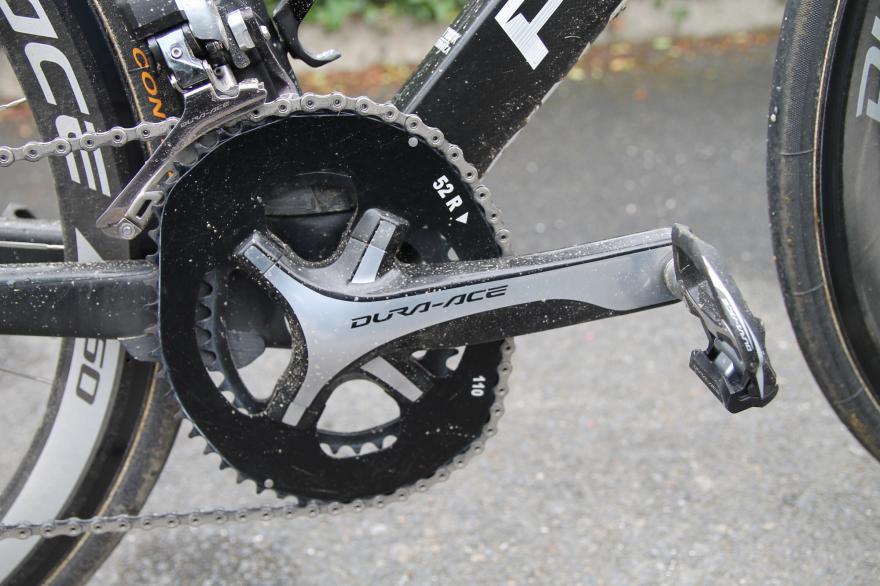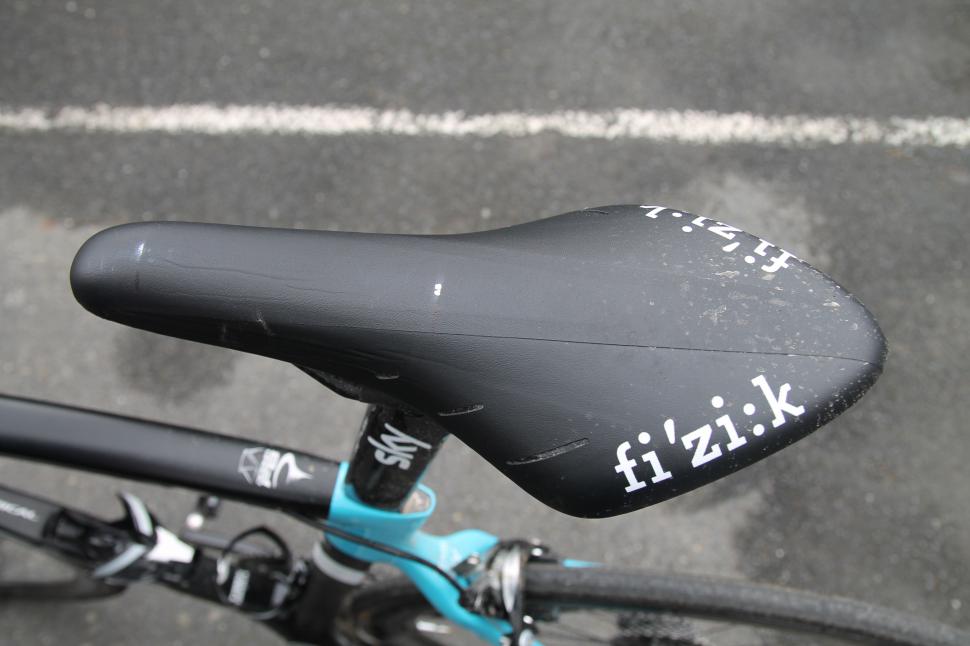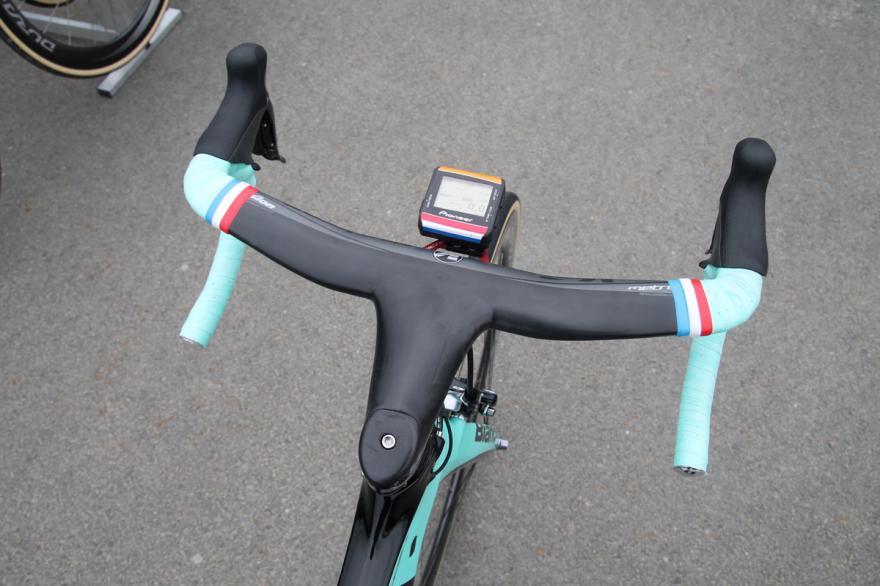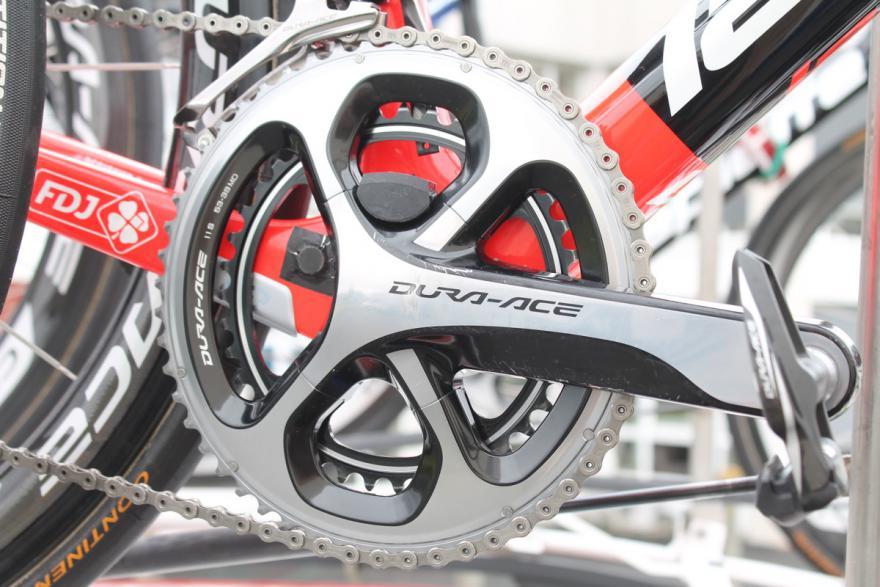- News
- Reviews
- Bikes
- Components
- Bar tape & grips
- Bottom brackets
- Brake & gear cables
- Brake & STI levers
- Brake pads & spares
- Brakes
- Cassettes & freewheels
- Chains
- Chainsets & chainrings
- Derailleurs - front
- Derailleurs - rear
- Forks
- Gear levers & shifters
- Groupsets
- Handlebars & extensions
- Headsets
- Hubs
- Inner tubes
- Pedals
- Quick releases & skewers
- Saddles
- Seatposts
- Stems
- Wheels
- Tyres
- Tubeless valves
- Accessories
- Accessories - misc
- Computer mounts
- Bags
- Bar ends
- Bike bags & cases
- Bottle cages
- Bottles
- Cameras
- Car racks
- Child seats
- Computers
- Glasses
- GPS units
- Helmets
- Lights - front
- Lights - rear
- Lights - sets
- Locks
- Mirrors
- Mudguards
- Racks
- Pumps & CO2 inflators
- Puncture kits
- Reflectives
- Smart watches
- Stands and racks
- Trailers
- Clothing
- Health, fitness and nutrition
- Tools and workshop
- Miscellaneous
- Buyers Guides
- Features
- Forum
- Recommends
- Podcast
TECH NEWS
 marcel kittel specialized venge tdf1.jpg
marcel kittel specialized venge tdf1.jpgSix tech highlights from the 2016 Tour de France
We’ve reported on a lot of the bikes and equipment from the 2016 Tour de France, from Chris Froome’s winning Pinarello Dogma F8 to FSA’s unveiling of its new electronic groupset, but here we pick six of the most interesting tech observations from the race.
What stands out for you? Do let us know in the comments.
The new Rapha skinsuit that Froome didn’t get to wear
Rapha and Team Sky spent ages developing a new skinsuit that is claimed to save 15 seconds over a 30-minute time trial compared to the old skinsuit, but in the end, Chris Froome didn’t get to use it, instead having to wear an ill-fitting yellow skinsuit supplied by the yellow jersey sponsor Le Coq Sportif.
He was second in the stage 13 time trial to Tom Dumoulin, but won the uphill time trial of stage 18, with Dumoulin runner-up. The new Rapha Pro Team Time Trial Skinsuit was developed in the wind-tunnel and is made of 15 panels and four different fabrics, and each rider in Team Sky has one tailored to them.
Osymetric chainrings give Froome the edge?
They’re not for everyone, in fact, Chris Froome is the only rider to use them in the Tour de France, but they certainly appear to work for him. Do they provide him with a measurable performance benefit? The company behind them claims they help a cyclist to achieve 7-10% more power than standard round rings for a given amount of work. Is that the difference between Froome and his rivals? Unless he rides the Tour with regular rings, we might never know. He clearly believes they help him, so the evidence is far from conclusive.
If they were a proven advantage, you might presume the rest of Team Sky use them, but they don't. Froome battled on after his crash on a wet descent aboard Geraint Thomas' bike with regular roudn chainrings, but it looked like that had more to do with the saddle being too low than the chainrings being a different shape.
Comfort matters when racing for 3,535km
Could you sit on a race saddle for three weeks? That’s what the Tour de France asks of its racers, and some riders opt for extra padding in their saddles. Geraint Thomas requested Fizik to produce an Arione with unusually deep padding to provide a bit more comfort over the 3,535km. That’s in direct contrast to Fabian Cancellara, who likes a rock hard saddle. Confirmation he really is rock hard.
How Tour riders stay comfortable
Aero bikes becoming the norm
A relatively recent introduction, first popular with sprinters and breakaway specialists, aero road bikes are increasingly the default choice for many racers. While not an all-out aero bike, Chris Froome’s Pinarello Dogma F8 has aero shaped tube profiles and it must surely add up to a difference over the three weeks. The entire Katusha team opts for the Canyon Aeroad, the German company’s aero bike, and Peter Sagan and Mark Cavendish were both hugely successful on dedicated aero bikes.
Aero equipment of the Tour de France
Aero handlebars are increasingly popular
Another observation this year is the growing popularity of aero handlebars, where the stem and handlebar are moulded from one piece of carbon fibre. Even Chris Froome rode some of the race with a PRO Stealth Evo integrated handlebar, revealing his and Team Sky’s appreciation of the importance of aerodynamics. Vision unveiled a brand new swoopy handlebar at the race with a 10° forward bend, which it claims promotes a “more ergonomic climbing position and easier breathing”.
The power meter game is hotting up
Power meters are standard equipment on pro race bikes, with unfair criticism that some racers are slaves to their power meters. There is a whole host of power meter suppliers in the race but the big news was the quiet debut of Shimano’s highly anticipated power meter, neatly integrated into a Dura-Ace chainset. With so many of the teams using Shimano Dura-Ace drivetrains, this has the potential to really change the landscape.
David worked on the road.cc tech team from 2012-2020. Previously he was editor of Bikemagic.com and before that staff writer at RCUK. He's a seasoned cyclist of all disciplines, from road to mountain biking, touring to cyclo-cross, he only wishes he had time to ride them all. He's mildly competitive, though he'll never admit it, and is a frequent road racer but is too lazy to do really well. He currently resides in the Cotswolds, and you can now find him over on his own YouTube channel David Arthur - Just Ride Bikes.
Latest Comments
- eburtthebike 7 hours 8 min ago
The deterrent effect is almost certainly due to the massively increased likelihood of the offence being detected. As with other crimes, if the...
- Martin1857 7 hours 36 min ago
As a member of the Co-op community (I live in a Housing Co-op) and a bike owner /rider, this is very sad news. We need more Co-ops not less.
- AnotherChrisOnAnotherTrike 7 hours 37 min ago
My EV exceeds the size. It's the smallest vehicle available which can transport my wife's trike (excursions or rescue).
- Dnnnnnn 7 hours 27 min ago
It is sad for the individuals concerned but (and this is a general point, rather than specific to this story), we're much better off overall for...
- No Reply 8 hours 18 min ago
I agree with Pogacar regarding social media. The likes of Facebook, Instagram have done untold damage, especially to the minds of young people....
- David9694 8 hours 22 min ago
Lorry carrying 25 tonnes of beer catches fire on the M11...
- No Reply 8 hours 27 min ago
If you're a cyclist on a road you are public enemy number 1.
- Rendel Harris 8 hours 56 min ago
He advocates only riding mountainbikes solely offroad for ultimate safety, which is great if you're a millionaire of leisure living in Colorado...
- ktache 9 hours 27 min ago
That looks like a fun bike. Frame only, 2 and an 1/2 grand.
- wtjs 10 hours 24 min ago
Fair enough, personal experience may trump (not that one) theory. However, the bonking I have experienced has been due to lack of carbs. Your point...





Add new comment
3 comments
The swept-forward tops of that handlebar look bloody uncomfortable - surely a backward sweep would provide the same marginal gain (sorry) and give a more ergonomic hand position.
Boring
Thank you for your valuable input